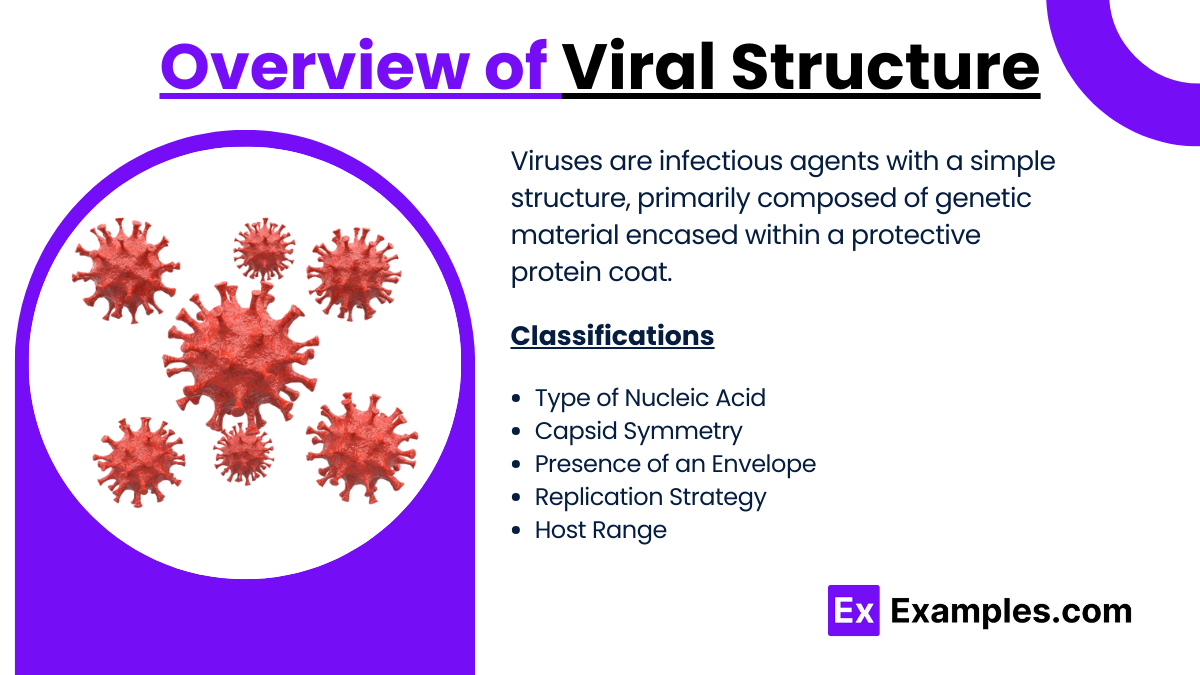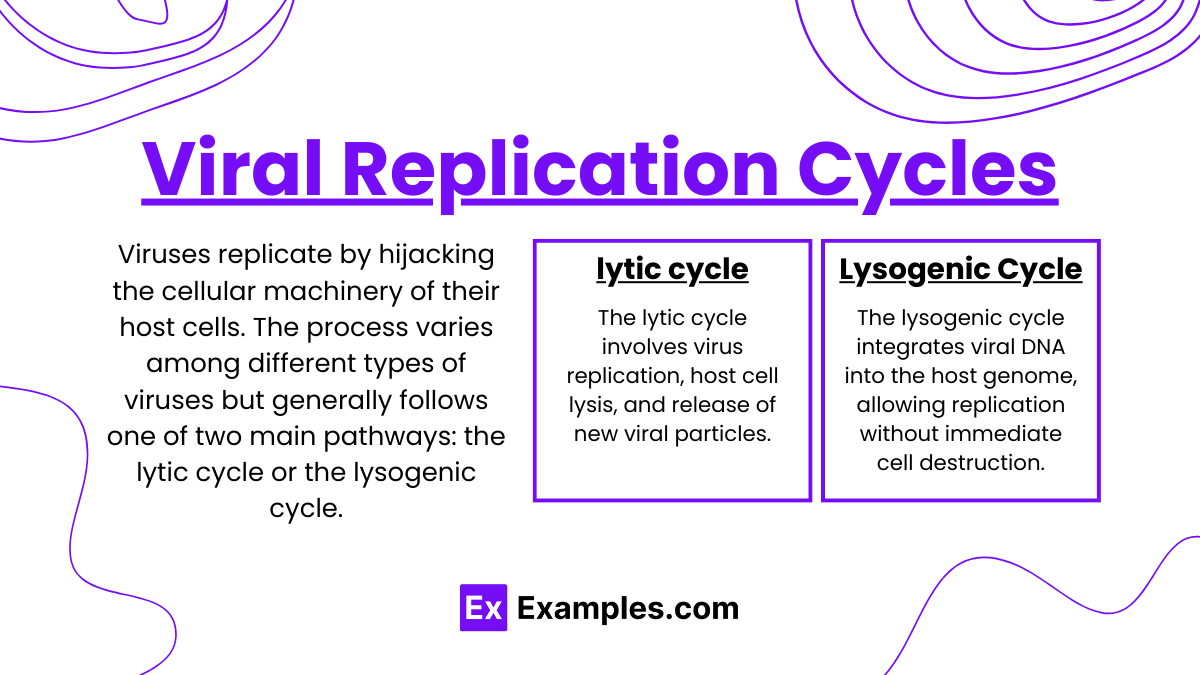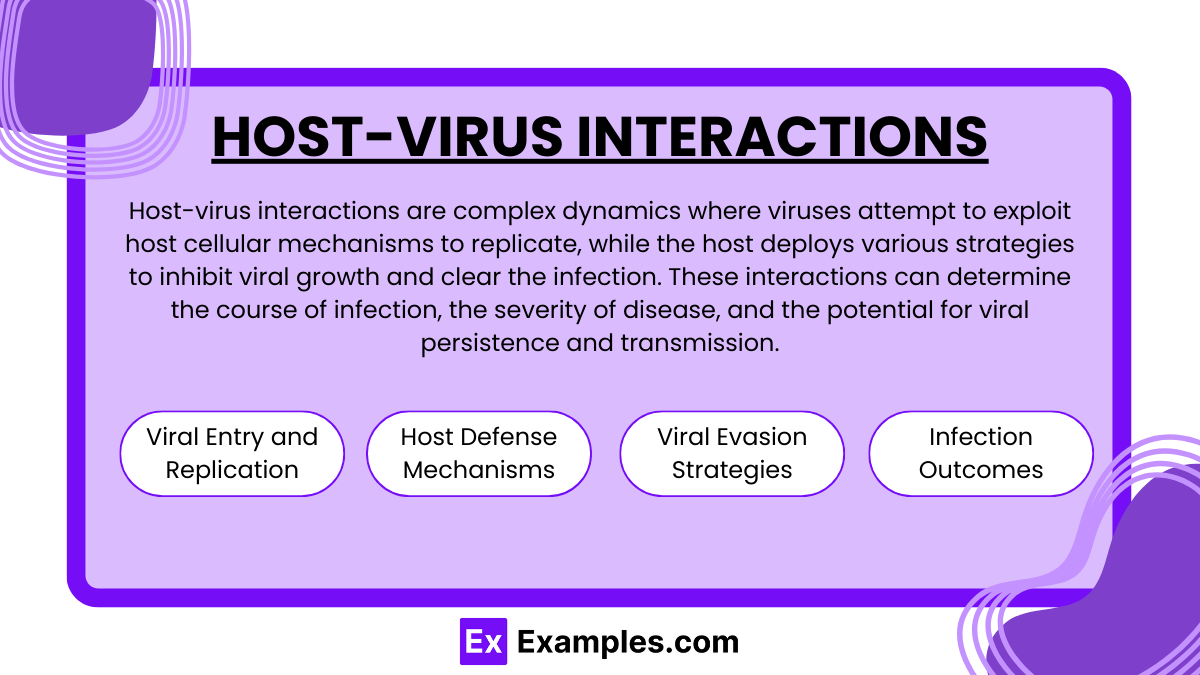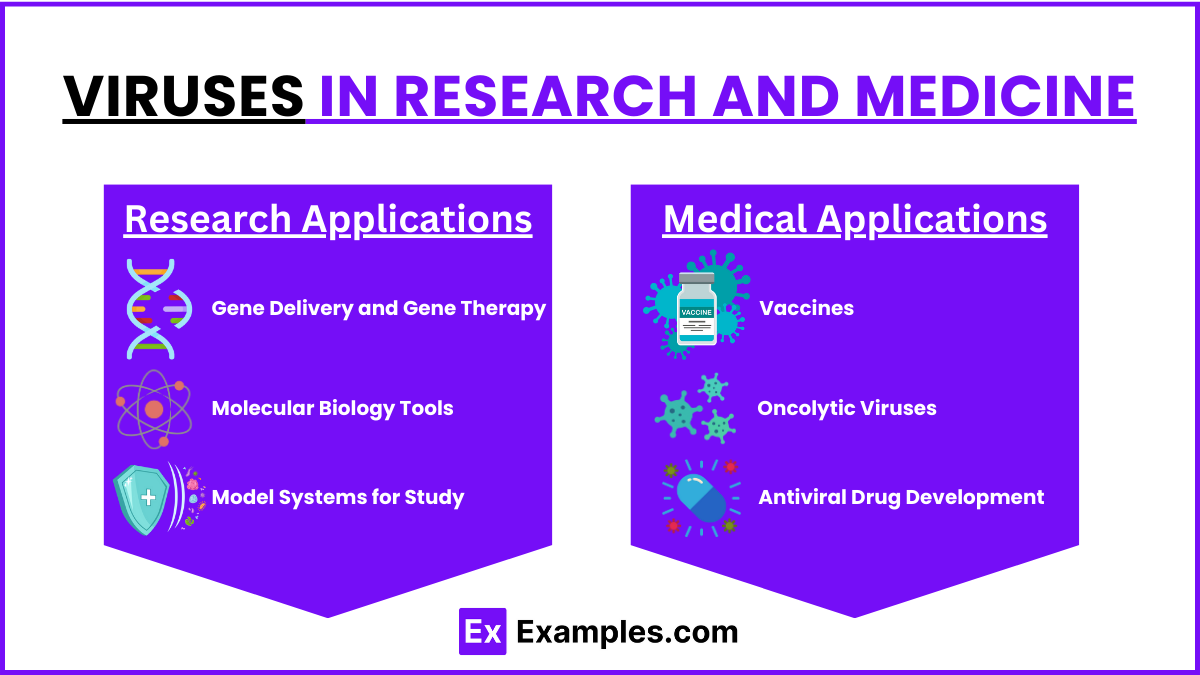Preparing for the MCAT requires a thorough understanding of viruses, a critical aspect of the Biological and Biochemical Foundations section. Mastery of viral structure, replication cycles, and interactions with host cells is essential. This knowledge provides insights into viral infections, immune responses, and vaccine development, crucial for achieving a high MCAT score.
Learning Objective
In studying "Viruses" for the MCAT, you should aim to understand the structure and classification of viruses, including their genetic material (DNA or RNA), capsid types, and envelope presence. Analyze viral replication cycles such as the lytic and lysogenic cycles, and explore how viruses interact with host cells to hijack cellular machinery. Evaluate the immune system's response to viral infections and the principles behind antiviral drugs and vaccines. Additionally, explore how viruses contribute to gene therapy, biotechnology, and disease development. Apply this knowledge to interpret experimental data and viral scenarios presented in MCAT practice passages, enhancing your preparedness for the exam.
Overview of Viral Structure and Classification
Viruses are infectious agents with a simple structure, primarily composed of genetic material encased within a protective protein coat. Here's a breakdown of their structural components and classification criteria:
Viral Structure
Genetic Material: Viruses contain either DNA or RNA, which can be single-stranded (ss) or double-stranded (ds). This genetic material dictates the virus's replication method and its interaction with the host cell.
Capsid: The protein shell that encloses the viral genome. Made up of protein subunits called capsomers, the capsid can have various shapes, influencing the virus's infectivity and immune evasion strategies.
Envelope: Some viruses possess an outer lipid membrane derived from the host cell, known as an envelope. This envelope often contains viral proteins critical for attachment to host cells.
Classification
Viruses are classified based on several key characteristics:
Type of Nucleic Acid: Classifying viruses as DNA or RNA viruses helps determine their replication strategy and the class of drugs that might inhibit them.
Capsid Symmetry: Viruses may have icosahedral, helical, or complex symmetry. Icosahedral viruses are roughly spherical, helical viruses are shaped like rods, and complex viruses have intricate structures, such as bacteriophages with heads and tails.
Presence of an Envelope: Enveloped viruses are generally more sensitive to environmental changes since the lipid membrane can be disrupted by detergents and desiccation.
Replication Strategy: Depending on how they replicate, viruses are further classified into different groups. For instance, RNA viruses might use reverse transcription as part of their lifecycle (like retroviruses).
Host Range: The specific types of cells and organisms a virus can infect. Some viruses are restricted to specific hosts (like human-specific viruses), while others can cross species barriers.
Viral Replication Cycles
Viruses replicate by hijacking the cellular machinery of their host cells. The process varies among different types of viruses but generally follows one of two main pathways: the lytic cycle or the lysogenic cycle. Understanding these cycles is crucial for developing antiviral therapies and vaccines.
Lytic Cycle
Attachment and Entry: The virus attaches to a specific receptor on the host cell's surface and then enters the cell by fusion or endocytosis.
Decapsidation: Once inside, the viral capsid is removed to release the viral genome into the host cell's cytoplasm.
Replication: The viral genome commandeers the host's cellular machinery to synthesize viral components—replicating the viral genetic material and producing viral proteins.
Assembly: Newly synthesized viral genomes and capsid proteins assemble into new virus particles.
Release: The host cell lyses (breaks open), and the new viruses are released to infect adjacent cells.
Lysogenic Cycle
Integration: After entering the host cell, the viral DNA integrates into the host cell's genome, becoming a prophage in bacterial hosts or a provirus in eukaryotic hosts.
Replication: The viral DNA replicates along with the host cell's DNA without causing harm. This can continue for many generations.
Induction: The viral genome may exit the host genome in response to certain triggers (e.g., stress, UV light), switching to the lytic cycle.
Lysis: Follows the steps of the lytic cycle—producing new viruses that burst out of the host cell, destroying it.
Immune Responses to Viruses
The immune system has evolved sophisticated mechanisms to detect, control, and eliminate viral infections. This response is orchestrated through both the innate and adaptive immune systems, which work in concert to defend against viral threats.
Innate Immune Response
First Line of Defense: Includes physical barriers like skin and mucous membranes.
Cellular Response: Involves macrophages, dendritic cells, and natural killer (NK) cells which detect and destroy infected cells.
Cytokines and Interferons: These are produced by infected cells, inhibiting viral replication and alerting neighboring cells.
Adaptive Immune Response
Specific and Long-lasting: Targets specific viruses with precision and creates memory cells for future protection.
T Cells:
Cytotoxic T Cells: Kill virus-infected cells.
Helper T Cells: Coordinate the immune response, aiding other immune cells.
B Cells and Antibodies: Produce antibodies that neutralize viruses or mark them for destruction.
Viral Immune Evasion
Antigenic Variations: Such as influenza viruses altering their surface proteins to evade immune detection.
Inhibiting Immune Function: Some viruses can suppress or avoid the immune response, e.g., HIV impairing helper T cells.
Host-Virus Interactions
Host-virus interactions are complex dynamics where viruses attempt to exploit host cellular mechanisms to replicate, while the host deploys various strategies to inhibit viral growth and clear the infection. These interactions can determine the course of infection, the severity of disease, and the potential for viral persistence and transmission.
Viral Entry and Replication
Entry: Viruses enter host cells via specific receptors and often mimic or hijack cellular entry mechanisms like endocytosis.
Replication: Once inside, viruses utilize the host's cellular machinery to replicate their genetic material and produce viral components.
Host Defense Mechanisms
Innate Immunity: Provides immediate defense through physical barriers, immune cells like NK cells and macrophages, and antiviral cytokines such as interferons.
Adaptive Immunity: Targets specific viruses through the actions of B cells (antibodies) and T cells (cell-mediated immunity).
Viral Evasion Strategies
Immune Evasion: Viruses may hide their presence, modify immune signaling, or directly infect immune cells to evade detection.
Antigenic Variation: Frequent changes in viral surface proteins help escape antibody recognition.
Infection Outcomes
Acute Infections: Short-lived infections that are usually resolved by the immune system.
Chronic and Latent Infections: Viruses persist in the body by evading immune clearance or remaining dormant in cells, potentially reactivating later.
Viruses in Research and Medicine
Viruses play pivotal roles in both research and clinical applications, contributing to our understanding of molecular and cellular biology and providing tools for therapy and diagnostics.
Research Applications
Gene Delivery and Gene Therapy: Viruses are engineered to deliver genes into cells, either for adding new genes or correcting defective ones in gene therapy. For example, adeno-associated viruses (AAVs) are commonly used due to their safety and efficiency in targeting diverse tissue types.
Molecular Biology Tools: Viruses are used as vectors in molecular biology to introduce genes, promoters, or other genetic elements into cells for research, helping scientists study gene function and regulation.
Model Systems for Study: Viruses serve as excellent models for understanding fundamental biological processes, such as DNA replication, RNA transcription, protein synthesis, and cell signaling, due to their simplicity and the rapidity with which they replicate.
Medical Applications
Vaccines: Live attenuated and inactivated viral vaccines are crucial for preventing viral infections. Viral vectors are also used in newer vaccine technologies, such as those developed for COVID-19, where they deliver viral antigens to stimulate an immune response without causing disease.
Oncolytic Viruses: These are viruses that are modified to infect and kill cancer cells while sparing normal tissues. They can also induce an immune response against tumors.
Antiviral Drug Development: Viruses are used in high-throughput screening for antiviral drugs. Research involves understanding viral life cycles to identify new drug targets that can disrupt viral replication without harming the host.
Examples
Examples 1: HIV and Reverse Transcription
HIV, a retrovirus, uses reverse transcriptase to convert its RNA genome into DNA, which then integrates into the host's genome. This integration allows for viral persistence and evasion from the host immune system, demonstrating the challenge of developing effective treatments and the critical role of antiretroviral therapy.
Examples 2: Influenza Virus and Antigenic Drift
The influenza virus frequently undergoes minor genetic changes called antigenic drift, which alters its surface proteins (hemagglutinin and neuraminidase), allowing it to evade the immune system. This necessitates the annual update of influenza vaccines to match the most prevalent strains.
Examples 3: Herpes Simplex Virus and Latency
Herpes simplex virus (HSV) can remain latent in nerve cells for years, evading the immune system. Reactivation can occur under certain conditions such as stress or weakened immunity, leading to recurrent infections. This lifecycle is important for understanding viral persistence and reactivation diseases.
Examples 4: Bacteriophages in Phage Therapy
Bacteriophages are viruses that infect bacteria. Phage therapy utilizes these viruses to target and kill antibiotic-resistant bacteria, offering a potential treatment alternative in the face of rising antibiotic resistance.
Examples 5: Oncolytic Viruses in Cancer Therapy
Oncolytic viruses selectively infect and lyse cancer cells without harming normal cells. An example is the use of a genetically modified herpes virus to treat melanoma. This approach uses the virus's natural ability to replicate and kill host cells, harnessed to target cancer cells specifically.
Practice Questions:
Question 1
Which enzyme is unique to retroviruses and is necessary for their replication?
A) DNA polymerase
B) Reverse transcriptase
C) RNA polymerase
D) Ligase
Answer: B) Reverse transcriptase
Explanation:
Reverse transcriptase is an enzyme unique to retroviruses that allows them to transcribe their RNA genome into DNA. This DNA is then integrated into the host's genome, a crucial step for the replication of retroviruses like HIV. This process is different from typical DNA replication and transcription mechanisms in non-retroviral cells.
Question 2
Which of the following is a primary method by which vaccines confer protection against viral infections?
A) Promoting viral mutation
B) Inhibiting nucleic acid synthesis
C) Stimulating the immune system to recognize the virus
D) Directly killing the virus with antiviral agents
Answer: C) Stimulating the immune system to recognize the virus
Explanation:
Vaccines work primarily by stimulating the immune system to recognize and combat the virus. They often use weakened or inactive parts of the virus to train the immune system, so it can respond more rapidly and effectively upon exposure to the actual virus. This preparation helps prevent infection or reduce the severity of the disease.
Question 3
Which viral property is particularly targeted by antiviral drugs for influenza?
A) Reverse transcriptase activity
B) Ribosomal binding sites
C) Neuraminidase activity
D) DNA integration
Answer: C) Neuraminidase activity
Explanation:
Antiviral drugs for influenza, such as oseltamivir (Tamiflu), specifically target neuraminidase, an enzyme on the surface of influenza viruses that facilitates the release of newly formed viral particles from infected cells. By inhibiting neuraminidase, these drugs prevent the virus from spreading to other cells, effectively containing and reducing the duration of the infection.







